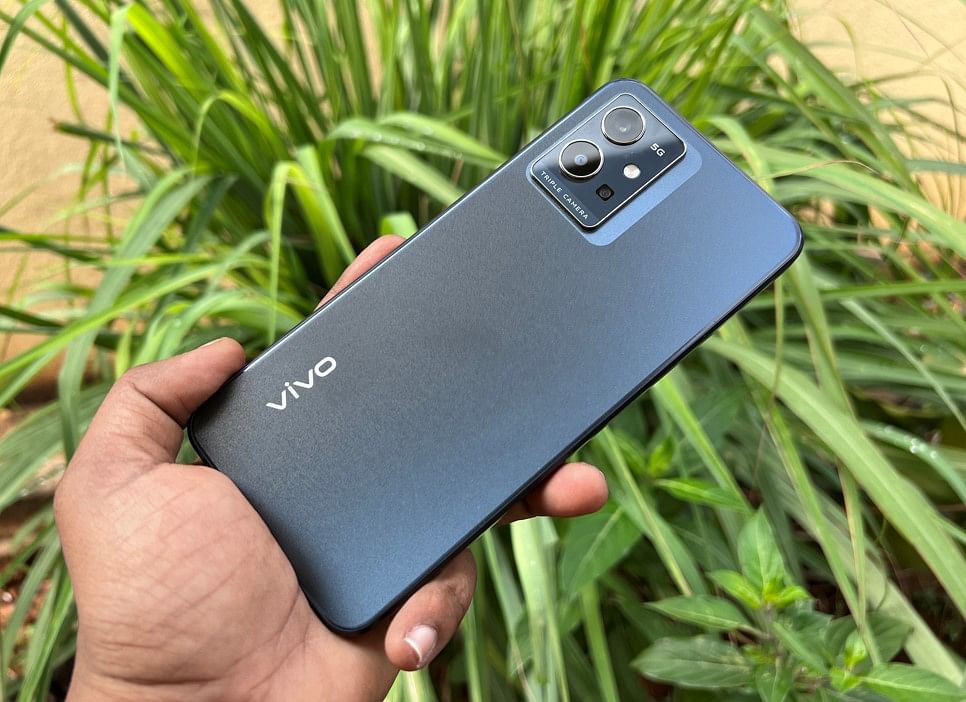
Having found success in the premium V series, Vivo has introduced a brand new line of mid-range T-series phone in India.
Vivo T1 comes in two configurations— 4GB RAM + 128GB storage, 6GB RAM + 128GB storage— for Rs 16,990 and Rs 19,990, respectively.
Vivo T1 looks outstanding in the sunlight and inside, it comes with Qualcomm's new processor, but does it deliver the goods? Let's check it out.
Design, build quality, and display
In India, in the mid-range phone segment, the devices look almost the same, and very difficult to differentiate between them. They all look glossy with either glass or glasstic (in most of the cases), a polycarbonate-based transparent cover on the phones. They are big fingerprint magnets and the smooth surface makes them slip easily from the hands.
In this aspect, Vivo T1 stands out with the flat edge design language. It features a sturdy rail around the edges and a matte finish, similar to the top-end V and X series models.
Vivo engineers have done a commendable job of making the phone shiny and smooth, yet offering a good grip for the fingers.
And, yes the starlight black model with frosted glass does an excellent job repelling the fingerprint smudges and dust on the cover. But the camera module in the top left corner has to be cleaned more to get good pictures.
The company offers a transparent silicone case cover with the retail box and also pre-applies an additional plastic-based screen guard on the front. This makes the device more durable and serves the customer longer.
Besides the starlight black, Vivo also offers a rainbow fantasy variant and it too looks great.
On the front, it features a 6.58-inch full HD+(2408 × 1080p) LCD display and has a screen-to-body ratio of 83.9 per cent. It has a pixel density of 401 ppi (pixels per inch) and offers a peak brightness of 460 nits. It is good enough to view content outdoors under a shade, but I had to squint a bit while reading news under direct sunlight.
A notable aspect of the device is that it supports 120Hz refresh rate. The former comes in handy for a buttery-smooth internet browsing experience and navigating through the phone's interface.
And with the 240Hz touch sampling rate, the display responds well to touch inputs while playing games.
Also, the device features a side-mounted fingerprint sensor, which also doubles up as the power button. The biometric sensor works without any fuss.
Performance
Vivo T1 is powered by 8nm class Qualcomm Snapdragon 695 octa-core processor (2.2 GHz Kryo 660 Gold x 2 cores + 1.7 GHz Kryo 660 Silver x 6 cores) with Adreno 619L GPU, Android 12-based FuntouchOS 12 backed by 4GB / 6GB / 8GB LPDDR4x RAM with 128GB UFS 2.2 storage (expandable up to 1TB).
During the entire testing period, the phone worked fine and I did come across any pressing issues to complain as such. I had a good time playing games and the device did not overheat even while streaming content.
However, if you are outdoors, and perform the same activities, the phone, particularly the display will get warm. But, this is normal for any mobile in a tropical country like India.
Also, with the virtual RAM feature, the device performance can be boosted and it comes activated out-of-the-box. Our review unit came with 8GB RAM and thanks to virtual RAM, it gets bumped up to 12GB. The apps loaded faster, and the phone was swift in responding to touch inputs, operating the camera, and doing other chores.
Vivo T1 comes with a 5,000mAh cell capacity. It lives up to the hype and is well optimized to perform all day. But, it takes forever to fully charge from zero to 100 percent. It takes around two hours and 15 minutes for a single full charge.
It should be noted that this Vivo phone supports just two 5G bands-- 77, 78 (SA/NSA) in India.
Photography
Vivo T1 features a triple-camera module-- main 50MP wide sensor ( f/1.8, 26mm lens, PDAF: Phase Detection Auto Focus) backed by 2MP macro (f/2.4) camera and 2MP (f/2.4) depth sensor with dual-LED flash.
The camera does a good job with close-up shots and even colours too, they come off vibrant worthy to be shared on social media platforms. Most importantly, the minute details are captured well.
Also, it can record full HD (1080p) videos and it comes pretty stable and is on par with any of the rival brands.
In the night mode, the pictures look decent. The camera manages to absorb more light to brighten the sky, but the noise is visible.
The two qualms I have with the phone are that it does not have ultra-wide angle and telephoto lenses. But, still, the main sensor is capable enough to take good photos with wide areas covered in the frame. The 2X zoom works fine with less loss of photo quality.
On the front, it houses a 16MP (f/2.0) wide camera and yes, it can take big group selfies with less hassle.
Also, the native camera apps offer a plethora of superficial editing and filters to enhance the photography experience and also allow users to adjust facial colour tone, jaw structure, eyes and nose to make the person more appealing and make a good DP for the messenger app or social media handles.
Final thoughts
Vivo's new T1 excels in performance and design language. The premium matte finish does an amazon job of keeping the phone clean from dust and fingerprint smudges. As far as the battery life is concerned, it can easily last a full day under normal usage. The camera hardware too, is decent for its asking price.
Get the latest news on new launches, gadget reviews, apps, cybersecurity, and more on personal technology only on DH Tech.
